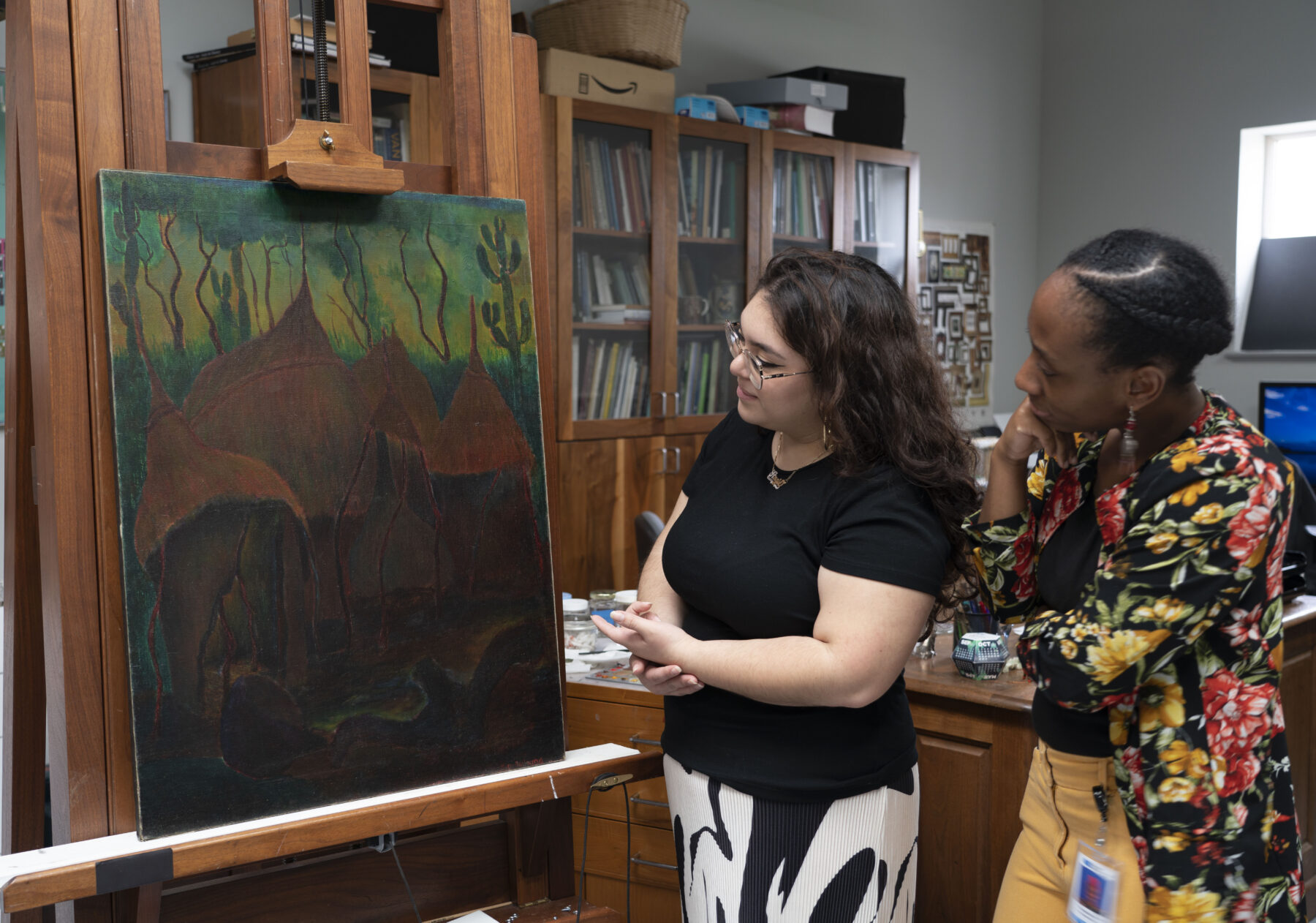Origins of The Harmon Foundation and Collection


The Harmon Foundation was an organization based in New York City, which supported and promoted the work of African and African American artists. It was established in 1922, 100 years ago, by William E. Harmon (1862-1928). He was a real-estate developer and philanthropist who initially created the foundation to fund the construction of neighborhood amenities like playgrounds and parks in small towns across the country. His father’s experience as an officer with the Buffalo Soldiers regiment may have influenced Harmon’s later desire to uplift African-Americans. Around 1925, the Foundation began giving out awards and cash prizes for excellent achievement by African-Americans in many fields, including the visual arts. Beginning in 1928, the Foundation arranged traveling exhibitions of art by African-Americans, which toured all over the country. William Harmon passed away in 1928, but the Foundation carried on for many more years under the leadership of Mary B. Brady, with Evelyn S. Brown as the Assistant Director.


In the late 1940s, a few Nigerian artists began sending their artwork to the Foundation to be included in their exhibitions, and in 1950, Ben Enwonwu was the first African artist to be brought to the US by the Foundation. Enwonwu had already studied and exhibited in England, where he had been very well-received. The Harmon Foundation was able to arrange for his work to be exhibited at Howard University, and later many other academic institutions. Other artists represented in Hampton’s collection, including Ahamadu Sirleaf and Sam J. Ntiro visited the US in 1952 and 1960 respectively, under various grant programs.

Further art exhibitions focusing on African art were organized by the Foundation in the 1960s, including Art from Africa of Our Time, which showed paintings by Ben Enwonwu, Gerard Sekoto, and Suzanna Ogunjami. These exhibitions traveled to various HBCUs, including Hampton University (then called Hampton Institute), and aimed to foster “the growing feeling for the value of native cultures of Africa” among African Americans (Lathrop).
In 1966, the Harmon Foundation published Africa’s Contemporary Art and Artists by then Assistant Director of the Harmon Foundation, Evelyn S. Brown. This built upon the work done by Forrester Washington in the book Contemporary Artists of Africa, which was published by the Harmon Foundation in 1960. The newer publication was created as “a review of creative activities in painting, sculpture, ceramics and crafts of more than 300 artists working in the modern industrialized society of some of the countries of Sub-Saharan Africa.” In the introduction, Brown acknowledges that study into Modern African Art started in the late 1920s and 1930s, but had not been extensively covered. Aina Onabolu, the pioneering Nigerian artist, and Kenneth C. Murray, former British education officer in Nigeria, along with other individuals within Africa were influential in informing the Harmon Foundation about Africa’s growing modern art scene.
According to the Library of Congress’ Finding Aid for the Harmon Foundation collection, in preparation for the publication of Africa’s Contemporary Art and Artists, the Harmon Foundation compiled a wealth of information concerning Modern African Art. This included artist names, bios, and correspondence between artists and the directors of the Harmon Foundation.

The Foundation also worked to obtain American sponsors for promising African artists and at times arranged for some artists to receive further education in the United States.
For reasons which are not currently clear to us, the Harmon Foundation was dissolved in 1967. The artworks and documentation owned by the Foundation were donated to various institutions, including Hampton University. Most of the paper records ended up at the National Archives, and other portions of the collection can be found in the Smithsonian American Art Museum, the National Portrait Gallery, and Fisk University.
Mellon Fellowship Project
Since coming to the Hampton University Museum, the paintings from the Harmon Foundation collection have been sporadically studied and exhibited, but never comprehensively inventoried or examined by a conservator. A few have traveled to other museums for exhibitions, such as To Conserve a Legacy: American Art from Historically Black Colleges and Universities, which took place in 1999 and 2000. In general, more public interest has been shown in the paintings by African-American artists from the Harmon Foundation collection, rather than those native to Africa. The latter is the focus of the current Andrew W. Mellon Foundation Grant, which aims to further expand the research into modern African art through both a curatorial and conservation lens, bringing a better understanding of these artworks to the institution and the public.
For more information, please see the page “About the Andrew W. Mellon Foundation Fellowship”
Disclaimer: This information was obtained from the online and print sources listed below, but further research in the National Archives and Library of Congress is ongoing, and we will post about any interesting updates we may learn in future articles.
References
- Brown, Evelyn S. “Africa’s Contemporary Art and Artists: A Review of Creative Activities in Painting, Sculpture, Ceramics and Crafts of More Than 300 Artists Working in the Modern Industrialized Society of Some of the Countries of Sub-Saharan Africa”. New York: Harmon Foundation, 1966.
- Evenhaugen, Anne. “African American art and the Harmon Foundation.” Smithsonian Libraries and Archives. February 22, 2013.
- “Fighting Prejudice through Portraiture with the Harmon Foundation Collection.” National Portrait Gallery, Smithsonian Institution.
- “The Harmon.” Locate Arts: Nashville Exhibitions. 2018.
- McCarthy, Nora. “Harmon Foundation, Inc., Records: A Finding Aid to the Collection in the Library of Congress.” Washington, D.C., Library of Congress, 2010.
- Oechsner, Carl. “The Other Harmon.” Croton Friends of History.
- Washington, Forrester B. “Contemporary Artists of Africa.” New York: Harmon Foundation, Incorporated, 1960.
Explore other articles like this
Art Spotlight: The Abandoned Hut by Mordecai Buluma
In this blog post Angie and Tashae discuss the symbolism behind The Abandoned Hut by Mordecai Buluma as well as the conservation treatment used to prepare it for exhibition.
